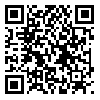BibTeX | RIS | EndNote | Medlars | ProCite | Reference Manager | RefWorks
Send citation to:
URL: http://jsurgery.bums.ac.ir/article-1-459-en.html
Introduction: The maintenance of an adequate airway during surgery is essential for effective oxygenation and ventilation in anesthetized patients. The optimal timing for laryngeal mask airway (LMA) insertion to prevent airway complications and enhance patient safety remains uncertain. The present study aimed to compare trapezius muscle compression and chin lift maneuvers as indicators of appropriate LMA insertion timing.
Methods: This randomized controlled trial (RCT) included 138 patients undergoing elective orthopedic surgery at Imam Reza Hospital, Birjand University of Medical Sciences, Iran. Patients were randomly assigned using block randomization with stratification into two groups: trapezius muscle squeezing or chin lift maneuvers. Anesthesia induction was performed with midazolam, fentanyl, and sodium thiopental. The assigned maneuver was applied at 20-second intervals until no motor response was observed; the LMA was inserted at this point. Unsuccessful attempts were defined by complications, such as laryngospasm, bronchospasm, or oxygen desaturation (<90%). Hemodynamic parameters, LMA insertion time, and success rates were recorded and compared between the groups.
Results: Systolic blood pressure in mmHg declined after insertion of the LMA in both groups compared to the pre-induction (P-value<0.001). In addition, diastolic blood pressure in mmHg showed a significant reduction in both groups after LMA insertion compared to the pre-induction (P-value<0.001). In the present study, the heart rate (beats per minute [bpm]) decreased significantly after LMA insertion and 2 min post-insertion compared to the pre-induction (P-value<0.001, P-value=0.050). The success rate for LMA insertion was high in both groups, with 94.2% (N=65) in the trapezius squeezing group and 97.1% (N=67) in the chin lift group. The time to successful LMA insertion was slightly longer in the chin lift group (93.62±13.50 seconds) compared to the trapezius squeezing group (90.14±12.18 seconds); however, this difference was not statistically significant (P-value=0.114).
Conclusion: The time for LMA insertion was slightly longer in the chin lift group, but this difference was not statistically significant. Both maneuvers showed equally high success rates for LMA insertion. Hemodynamic changes, including blood pressure and heart rate, declined similarly in both groups, with no significant differences. Therefore, both the trapezius squeezing and chin lift maneuvers are equally effective for successful LMA insertion.
Received: 2025/01/5 | Accepted: 2025/02/2 | ePublished ahead of print: 2025/04/22 | Published: 2025/04/22
| Rights and permissions | |
 |
This work is licensed under a Creative Commons Attribution-NonCommercial 4.0 International License. |








